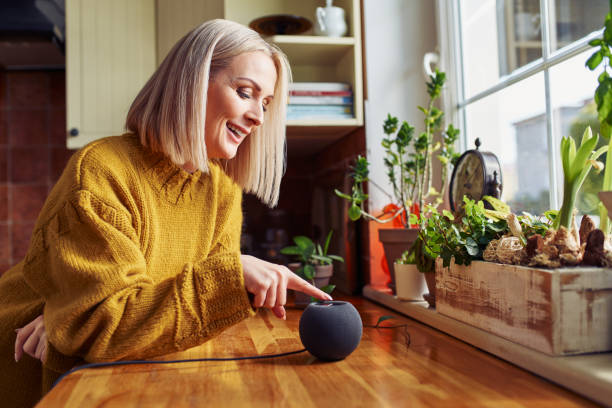Without a smart speaker, it would be difficult to set up a smart home because they serve as the control panel for all of your connected gadgets. You may cast old memories from Google Photos to Android TV boxes or operate several devices with a single command, saving you from having to navigate through dozens of different phone apps to do a straightforward operation.
Even while smart speakers are essential for a connected home, the selection has increased, making it difficult to pick the best one.
Although choosing between Alexa speakers and Google Assistant speakers may seem simple, each speaker has its own advantages, disadvantages, and sound quality. Some allow you use both Alexa and Google Assistant on the same device, while others feature a built-in Zigbee hub that you would otherwise need to purchase separately for things like smart lights. We have chosen the top smart speakers for your house from the plenty of options.
Amazon Echo Dot 4th Gen
The Echo Dot (4th generation) continues to be the best smart speaker for most consumers despite being a little over a year old. This little speaker is not only louder than its Google equivalent, but it also delivers richer sound with a bigger echo chamber (no pun intended) and deeper bass. Naturally, microphones are a necessary piece of technology for smart speakers, and fortunately, the Echo Dot’s mics are fairly responsive to the Alexa wake phrase. Therefore, you don’t have to shout while music is playing or you’re across the room. The bright ring light is similarly noticeable from a distance.
While Alexa has a modest advantage when used in smart homes, it is usually true that Google Assistant is a superior voice assistant overall. If you already have a connected device in your house, there’s a good possibility that it works with the Echo Dot because Alexa is compatible with much more smart home gadgets.
Though a significant change from the more understated appearance of earlier Dots, its crystal ball-like form has given Amazon more freedom to experiment with the front design. You can choose between the panda or tiger-looking Echo Dot for your child’s room. Additionally, you can’t place the Echo Dot in the middle of the room because it has a forward-firing speaker, but most purchasers won’t find this to be an issue.
Google Nest Hub Max
Although smart displays are fantastic in the kitchen, their speakers are frequently insufficient to allow you to dance your way through dinner preparation. In light of this, we recommend the Google Nest Hub Max (8/10, WIRED Recommends), which has a pair of surprisingly good speakers beneath its 10-inch touchscreen. Even though the sound quality won’t be as high as it would be with standalone smart speakers, you can still have a little dance party while the lasagna bakes. Additionally, you can pause music without touching the device or speaking by using a stop hand motion.
We currently prefer the Nest Hub Max above other smart displays for a number of additional reasons as well. Its ability to identify certain members of the household and present information specific to each is one of its many appealing features. The larger display also makes it ideal for watching YouTube tutorials. If you frequently interact with friends or coworkers via Duo, Zoom, or Google Meet, this is an even better choice now that Google has enabled support for group video calling through those platforms.
Bose Portable Smart Speaker
Bose is one of the smart assistant manufacture of high-end home audio products that only recently experimented with smart speakers. The most recent Bose Portable Smart Speaker might not appear to be as large as the Sonos Move, but it has enough of power inside. You can hear every beat because the bass isn’t overpowering, and it has the typical pleasant Bose sound with plenty of clarity across ranges. While most music listeners should find the bass to be satisfactory, individuals who like a booming sound may be dissatisfied.
Bose chose a bottom-firing speaker design that disperses sound in all directions, making it the ideal portable speaker for use at outdoor gatherings or in the middle of a room. Because it only weighs 2.3 pounds, the speaker is really simple to transport. And the speaker’s convenient grab handle serves as a constant reminder that it is designed to be used on the go. For a more seamless cross-platform experience, the Bose Portable Smart Speaker does support Alexa, Google Assistant, AirPlay 2, and Google.
Conclusion
It makes sense to start with the inexpensive Echo Dot for individuals who are just getting started with linked home setups. Since both voice assistants support thousands of smart home devices and speak various languages, choosing one over the other won’t significantly alter their bigger ecosystems. However, you should seriously consider staying with Amazon Alexa or Google Assistant if you currently possess a Fire TV or an Android TV set.
After you and your family have experienced the benefits of smart speakers, you might want to add an Echo smart display, as well as additional smart plugs and lights, to further automate your house. With your smart home, the possibilities are endless, so don’t forget to enjoy discovering what these gadgets are capable of.

